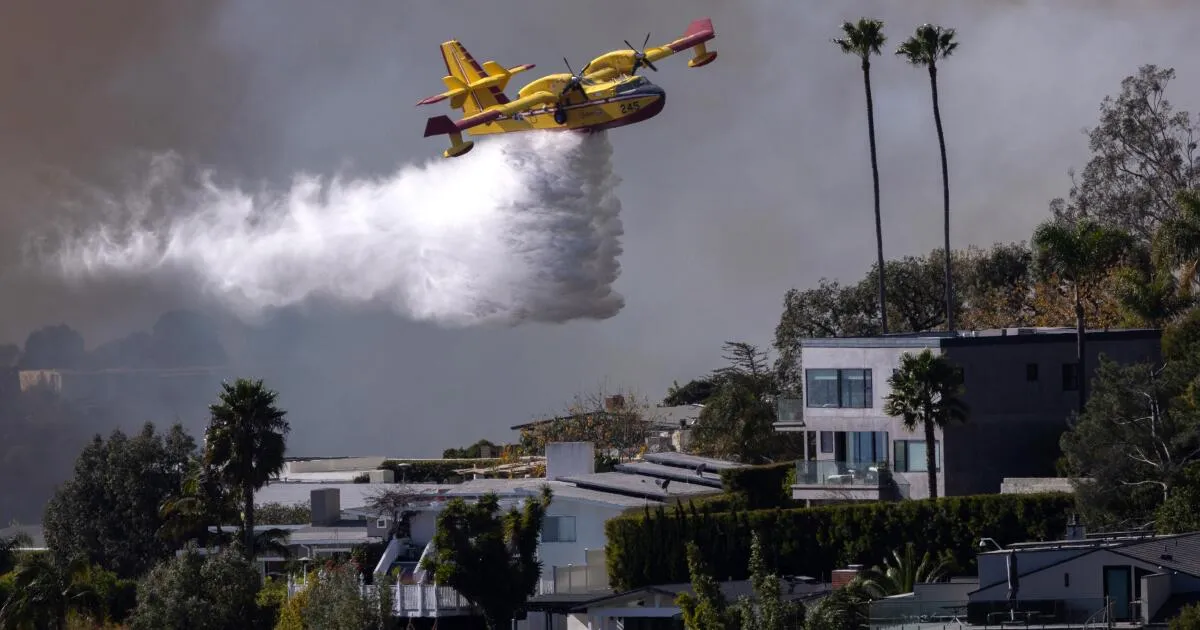
In early January, Los Angeles faced its most destructive inferno in history, which ravaged through Pacific Palisades and Malibu. This catastrophic fire was not a natural disaster but rather a rekindling caused by an earlier incident that an Uber driver allegedly ignited. Federal investigators have charged 29-year-old Jonathan Rinderknecht, a Florida resident, with intentionally starting the initial fire near a popular hiking area on New Year’s Eve.
Authorities announced Rinderknecht's arrest on Wednesday, following a thorough nine-month investigation into the origins of the Palisades fire. The blaze ultimately charred an alarming 23,400 acres and destroyed more than 6,800 structures, including numerous homes in both Pacific Palisades and Malibu. Tragically, the fire resulted in the deaths of twelve individuals. U.S. Attorney Bill Essayli stated, “While we cannot undo the damage and destruction that was done, we hope his arrest and the charges against him bring some measure of justice to the victims of this horrific tragedy.”
The initial fire, referred to as the Lachman fire, was reported around 12:17 a.m. on New Year’s Day by a resident living just two blocks from the popular Skull Rock trail. Although some locals reported seeing fireworks that night, authorities do not believe they contributed to the fire's ignition. Instead, they indicated that the blaze was sparked by an open flame. Rinderknecht had worked an evening shift as an Uber driver and drove through Pacific Palisades that night, appearing agitated according to two of his passengers.
Following his shift, Rinderknecht parked near the Skull Rock Trailhead and attempted to contact a former friend. Prosecutors revealed that he recorded videos using his iPhone while listening to a rap song that featured flames. In a strange turn of events, during the next five minutes, he attempted to call 911 multiple times but failed due to poor cell service. When he finally reached emergency services, it was too late; a resident had already reported the fire.
Although Rinderknecht was arrested in Florida, he had previously lived in Southern California and had connections in the area where the fire ignited. After moving to Florida, he provided false statements to authorities, complicating the investigation. Initially, water-dropping helicopters were grounded due to high winds, but they commenced aerial operations around 1:40 a.m., supported by ground crews. News footage captured the dramatic scene, showing towering flames threatening homes as firefighters rushed to combat the blaze.
By 3:30 a.m., Los Angeles Fire Department (LAFD) officials reported they had halted the fire's forward progression. Just over an hour later, LAFD announced that they had contained the fire's perimeter, although firefighters remained on-site to ensure no flare-ups occurred. While LAFD officials refrained from discussing whether they conducted thermal imaging to identify hot spots post-fire, experts believe this technique is crucial in assessing areas that might rekindle.
Subsequent analysis revealed that the fire reignited in the same vicinity where the Lachman fire occurred. On January 7, new smoke was observed in the same area, prompting firefighters to return to the hillside amid fierce winds. A firefighter acknowledged their return to the original fire site, highlighting the complex nature of wildfire management. Fire experts note that in some environments, a fire can reignite days or even months after it was thought to be extinguished, as embers can remain hidden beneath ash or debris.
This incident is reminiscent of other significant wildfires in history, such as the Oakland Hills fire in 1991, which devastated 2,500 structures following a previous six-acre fire. Similarly, the Maui fire, the deadliest in over a century, reignited from an earlier brush fire caused by downed power lines. These examples underscore the importance of continuous monitoring and management of wildfire sites, even after initial containment efforts.
As the investigation into the Palisades fire continues, it serves as a stark reminder of the devastating impact of wildfires and the necessity for vigilance in fire prevention and safety measures.